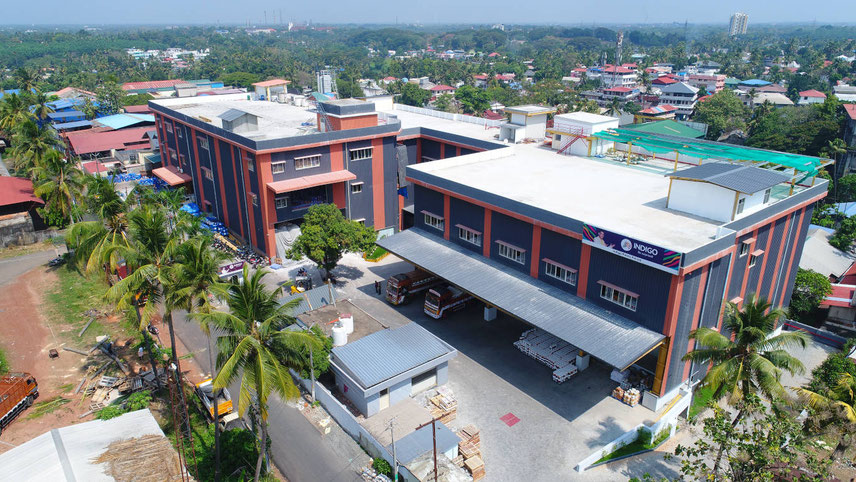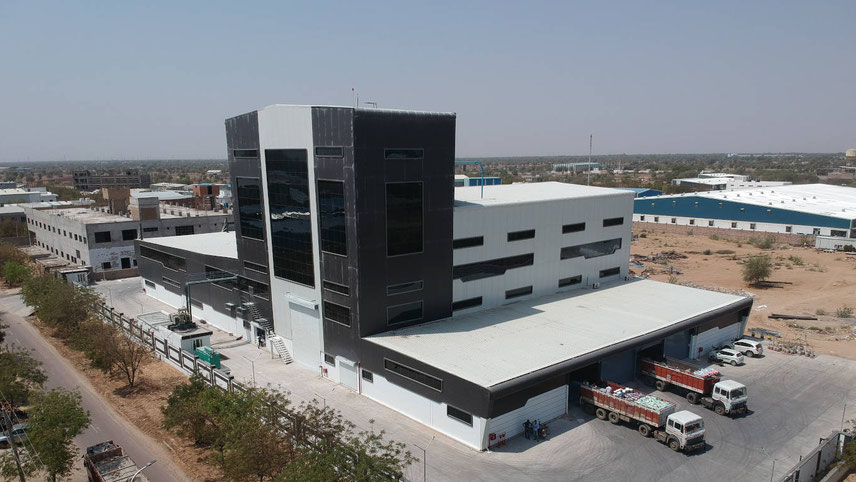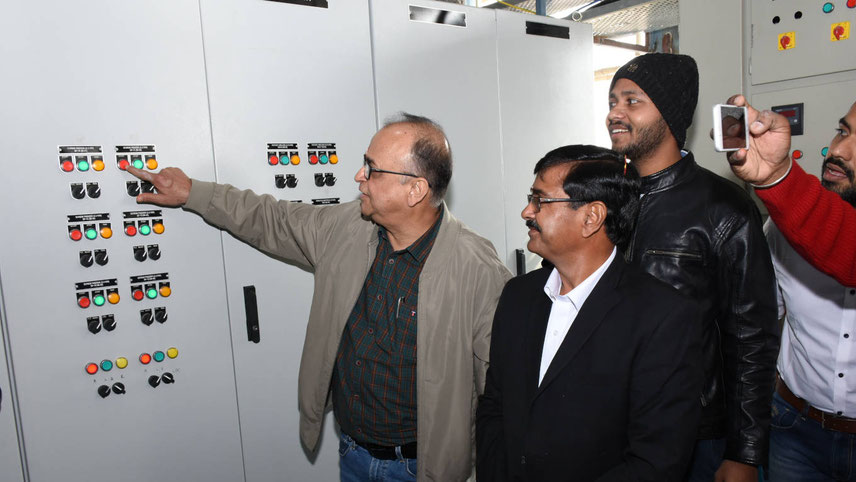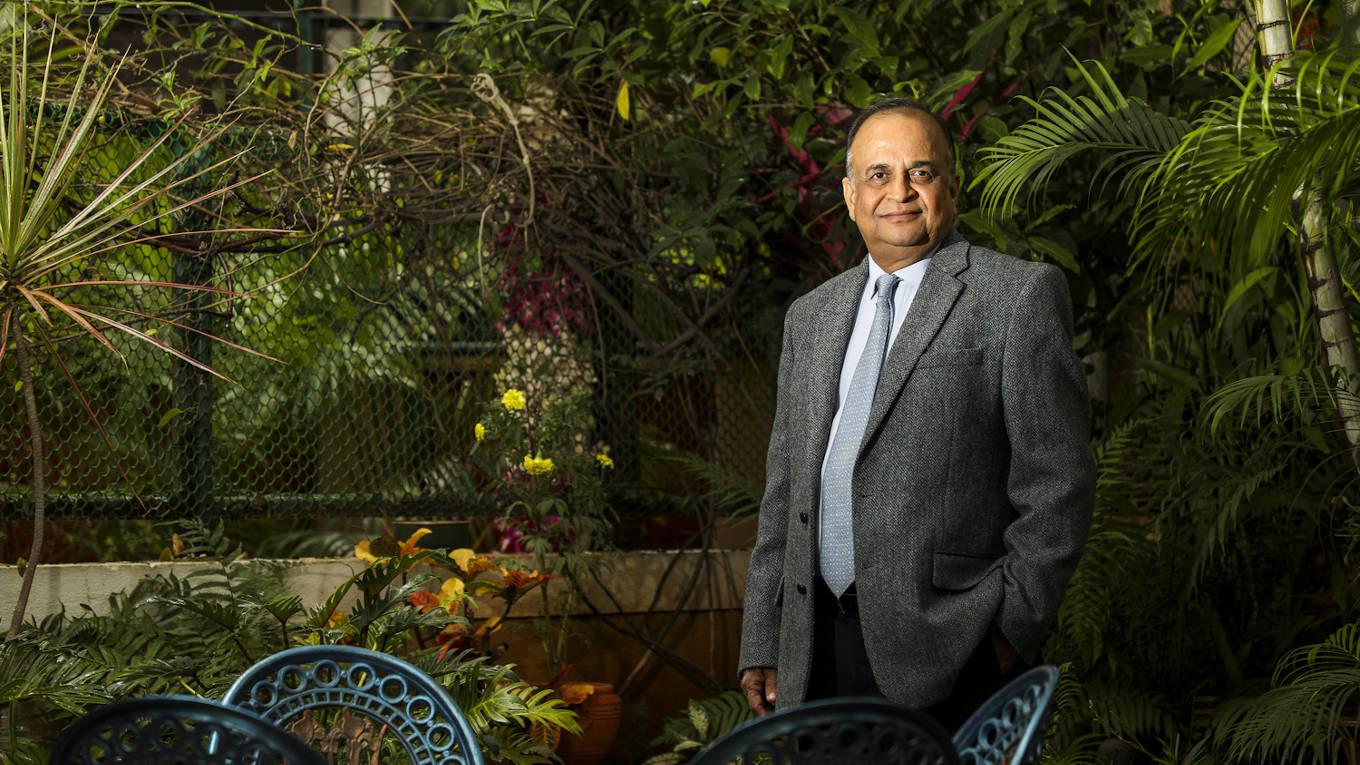-

Kochi plant: strategically located
The Indian paint industry is valued at about ₹54,500 crore and is expected to grow to ₹97,100 crore by 2024. There is a strong co-relation between the Indian paint industry and GDP growth of India. It has historically almost doubled India's GDP growth rate. Going forward, the decorative paint market is expected to grow at a CAGR of 13 per cent, while the industrial paint market is expected to grow at a CAGR of 9.9 per cent by 2024. Also, India's per capita paint consumption increased by a CAGR of 6.8 per cent in the last seven years from 2.6 kg in fiscal 2012 to 4.1 kg in 2018-19. Compared to the global average consumption of 14-15 kg per head, the per capita consumption of paints and coatings in India is low, indicating a significant opportunity for market penetration in here.
According to F&S, the organised players are expected to dominate the market share through 2024, with companies like Indigo Paints tapping into the market of unorganised players in rural areas and smaller cities. With higher penetration and a larger dealer network in these areas, Indigo Paints will be able to effectively influence the purchase decisions of the consumers and capture a share of the market of smaller players. The unorganised players have been mainly focussing on the decorative paints segment with a highly scattered market, comprising about 2,500 units of small- and medium-sized paint manufacturing plants.
Traditionally, the Indian paints market is dominated by the decorative market that represents 74 per cent of the total paints market in India. The organised market accounts for the top 10-12 players, who represent 77 per cent of the decorative market share, while the remaining 23 per cent comprises of many small players. Paint companies are required to spend significant resources to develop their distribution network to increase the visibility and reach of their products through direct distribution to dealers. The dealers are typically multi-brand and are located across metros, large cities, towns and villages. The market knowledge, financial muscle and time taken to develop such a network is significant.
Shift in preferences
Within the paint industry, the organised sector has a 67 per cent market share and the remaining 33 per cent is held by the unorganised sector. Until 2015, the unorganised sector had a market share of about 35 per cent, which has been penetrated by the organised sector, due to challenges faced by smaller players in the form of demonetisation and implementation of GST. “The organised players are expected to dominate the market share through 2024, with companies like Indigo Paints tapping into the market of unorganised players in rural areas and smaller cities. With higher penetration and a larger dealer network in these areas, Indigo Paints will be able to effectively influence the purchase decisions of the consumers and capture a share of the market of smaller players,” says the F&S report.
-

The Jodhpur unit makes water-based paints and cement-based paints and putties
The Indian decorative paint industry has been witnessing a gradual shift in preferences from the traditional whitewash to high-quality paints like emulsions and enamel paints, providing a stable base for growth of the Indian paint industry. In addition, it is creating a strong competitive market, where players are adopting different strategies to tap the growing demand in the market for a larger share. Further, increased focus on education, urbanisation, development of the rural market, and introduction of many innovative products such as odour-free, and dust and water-resistant paints, are major drivers that are propelling the growth of the paint market in India. The decorative paints industry is expected to grow at a CAGR of 13 per cent through 2024, with enamels and emulsions expected to record a CAGR of 14.2 per cent and 13.6 per cent respectively.
“Indigo has achieved its success in the highly competitive Indian decorative paint industry, on the back of its multi-pronged approach – introducing Indigo-differentiated products to create a distinct market in the paint industry, building brand equity for the primary consumer brand of Indigo, creating an extensive distribution network, and installing tinting machines across our network of dealers,” says Jalan, looking back at his company’s success story of two decades.
“We consistently seek to launch first-to-market products by identifying niche product opportunities and introducing products that address these requirements,” says Jalan. Indigo was the first to introduce certain category-creator products, including metallic emulsions, tile coat emulsions, bright ceiling coat emulsions and floor coat emulsions in the decorative paint market in India. Its value-added products include dirt-proof and waterproof exterior laminate, exterior and interior acrylic laminate and PU super gloss enamel.
With certain category-creator products, says Jalan, the company had an “early mover advantage in the markets. This has allowed us to set the pricing terms leading to higher margins for these products, compared to the rest of its product portfolio. These products have enabled us to build strong brand equity among end-customers and dealers thus aiding penetration of other decorative paint products.”
“The potential for growth in the decorative paint industry is enormous and one of our greatest strengths is that we have always given the utmost importance to innovation rather than being followers in the industry,” says TS Suresh Babu, chief operating officer, Indigo.
Mahendra Singh Dhoni, Indigo’s brand ambassador helicopter-shot specialist, comes from non-metro Ranchi and carved a niche for himself in cricket, traditionally dominated by big city boys. “Dhoni as our brand ambassador has helped tremendously to build the brand and highlight the principles we follow as a brand which is innovation and persistence,” says Babu. Indigo’s unique mascot – a zebra with colourful stripes – proved to be lucky too, as it helps increase its brand recall.
Well-integrated SAP system
The company has three manufacturing facilities – Rajasthan, Kerala and Tamil Nadu – and a well-integrated SAP system to manage inventory and effectively service the dealers. Its aggregate estimated installed production capacity has increased progressively over the years from 46,608 kl per annum and 48,944 tonnes per annum (tpa) as of 31 March 2018 to 101,903 kl pa and 93,118 tpa as of 31 March 2020. “Our manufacturing facilities are strategically located near our raw material sources, which reduces inward freight costs and results in lower cost of raw materials,” says Jalan.
-

Indigo was the first to introduce certain category-creator products, including metallic emulsions
The Jodhpur unit makes water-based paints and cement-based paints and putties. For water-based and cement-based paints manufactured at Jodhpur, the principal raw materials are white cement, minerals including lime, dolomite, calcite and talcum, and acrylic emulsions. These raw materials are available abundantly in Rajasthan and in its neighbouring state of Gujarat. Indigo has strengthened its presence in southern India and gained access to solvent-based paints through the acquisition of Hi Build Coatings Private Limited and its facilities at Kochi and Pudukkottai in 2015-16.
For water-based paints made at Kochi, the principal raw materials are acrylic emulsions (which are predominantly sourced from the neighbouring states of Tamil Nadu and Karnataka), minerals (which the company principally imports from Vietnam) and titanium dioxide and china clay (which are available within Kerala). For solvent-based paints manufactured at Pudukkottai, the principal raw materials include alkyd resins, which it mainly sources from manufacturers based in Tamil Nadu and the neighbouring state of Telangana, and turpentine oil that is available from refineries within Tamil Nadu.
“The work environment in the company is like a family,” says Chetan Humane, CFO, Indigo, who has been associated with the company for over 20 years. “All the employees in the company are aligned to its common objective, which is to make our company the most valued paint company in the country.”
Indigo draws about a third of its income from its differentiator paints and its input freights costs are low due the location of its plants close to the sources of raw materials. “Added to this are our low overheads, which contribute to our efficient financial management,” says Jalan.
Indigo now plans to expand its manufacturing capacities to grow and consolidate its pan-India presence. To cater to the increased demand for water-based paints, it plans to use a part of its IPO proceeds for the expansion. Indigo has filed its offer document with the market regulator SEBI and the date and price band will be decided in consultation with the investment bankers, later. Market sources say Indigo may raise about Rs1,000 crore.
The IPO is a fresh issuance, aggregating to Rs300 crore and an offer for sale of up to 58,40,000 equity shares of face value of Rs10 each by PE investor Sequoia Capital through its two funds SCI Investments IV and SCI Investments V and the promoter, Jalan. The net proceeds from the issue is to fund the capital expenditure for the expansion of the existing manufacturing facility at Pudukkottai, purchase of tinting machines and gyro shakers and repayment/pre-payment of borrowings.
Sequoia will exit partially, says Jalan. And, the Rs170 crore PE investment it made came in “when we needed the money most during 2014-16,” he acknowledges. “We wouldn’t have grown to this stage had we not had these funds,” he adds.
-
Indigo now plans to expand its manufacturing capacities to grow and consolidate its pan-India presence. To cater to the increased demand for water-based paints, it plans to use a part of its IPO proceeds for the expansion
Sequoia Capital India counts itself privileged to be a long-term partner to Indigo Paints,” says Sakshi Chopra, nominee director of the PE player on the board of Indigo Paints. “It’s been a joyous journey, where we have seen Indigo emerge from a challenger brand to a Top Five player in the industry.” Chopra further points out: “A large part of its success can be attributed to two things: one, a winning spirit that percolates from the leadership team to every sales rep on the ground; and two, their desire to surprise the Bharat customers with innovative and superior quality products at affordable prices.”
The F&S report says that the consumption of water-based paints is rising globally, and the demand is expected to remain high, as Indian paint makers are shifting from solvent-based to water-based paints. About 55 per cent of the raw materials used by paint companies are crude oil derivatives and comprise 30-35 per cent of the sector's overall raw material costs. The prices of crude oil and its derivatives are volatile and, when they fluctuate, they exert pressure on the prices of paints.
The prices have been moving up and down on the lower end since 2018, with 2020 experiencing the lowest prices. The oil & gas industry has experienced a price collapse for the third time in the last decade; the price collapse of 2020 being a combination of supply-shock and an unprecedented demand drop. The overall fluctuating prices of oil are creating a major pricing issue for paint companies. The recent capacity increases announced by key paint firms is also focussed on water-based systems. Moreover, adoption of green technologies and bio-based materials may positively impact the demand for water-based coatings in the country.
From Jhumri Telaiya to pan-India, Indigo has painted a two-decade-long success story – from being a challenger to a Big-Five brand – and now it looks forward to move to the next level by entering new markets.





































